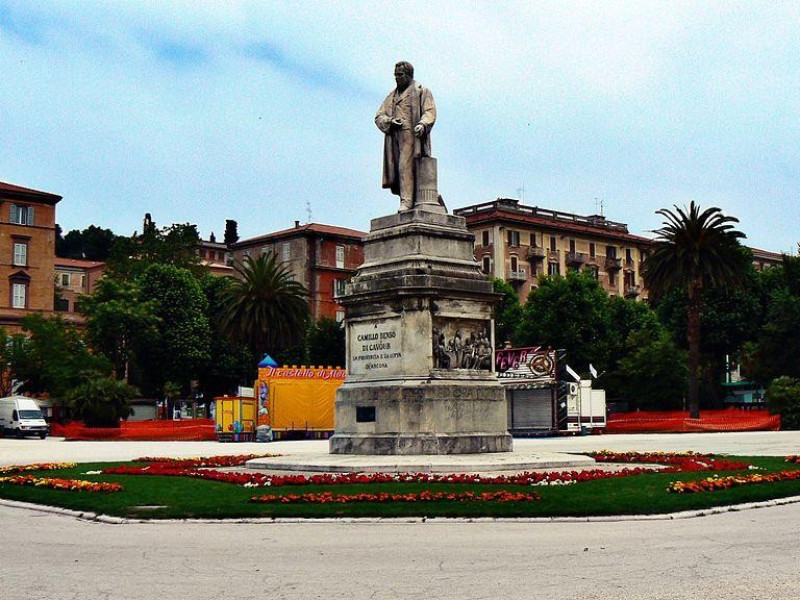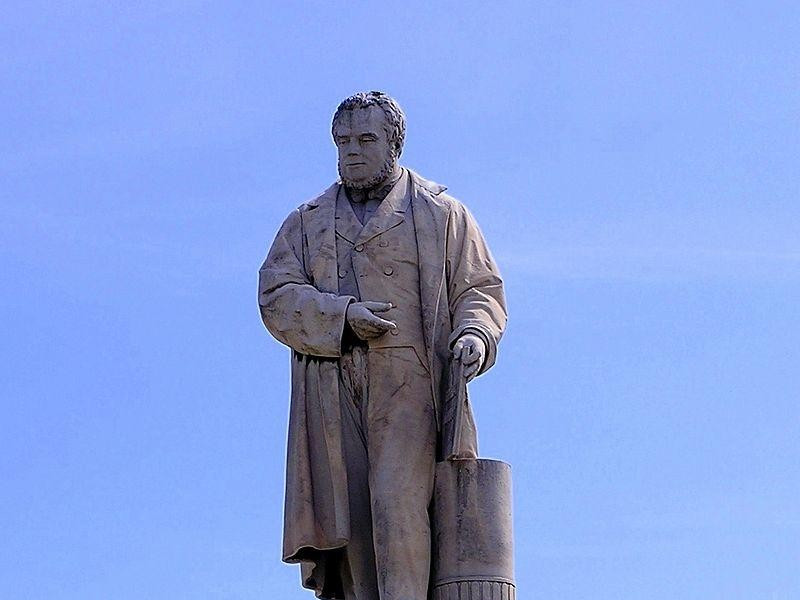Piazza Cavour
It is one of the four main squares of Ancona. It was designed in 1862, after the Unification of Italy, and opened in 1868. At the center is a statue of Cavour, by Aristodemo Costoli. On the base, two bas-reliefs representing the Congress of Paris and the Proclamation of the Kingdom of Italy. In the walls that surrounded the Square opened Cavour Gate, beyond which stretched the agricultural area of the Piana degli Orti. Between 1923 and 1925 this part of the gate and walls they were demolished and since then the Ssquare took on a new role, becoming a linking element between the historical districts and the new Adriatic district, as well as stop along the walk "from sea to sea", from the port to the coast of the Passetto. The Square was enlarged with new gardens, divided into four triangular blocks and surrounded by streets with trees and walkways. Cavour Sqaure is protected as "Historical heritage" since 1959.
It is one of the four main squares of Ancona. It was designed in 1862, after the Unification of Italy, and opened in 1868. At the center is a statue of Cavour, by Aristodemo Costoli. On the base, two bas-reliefs representing the Congress of Paris and the Proclamation of the Kingdom of Italy. In the walls that surrounded the Square opened Cavour Gate, beyond which stretched the agricultural area of the Piana degli Orti. Between 1923 and 1925 this part of the gate and walls they were demolished and since then the Ssquare took on a new role, becoming a linking element between the historical districts and the new Adriatic district, as well as stop along the walk "from sea to sea", from the port to the coast of the Passetto. The Square was enlarged with new gardens, divided into four triangular blocks and surrounded by streets with trees and walkways. Cavour Sqaure is protected as "Historical heritage" since 1959.


